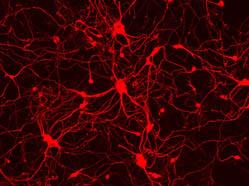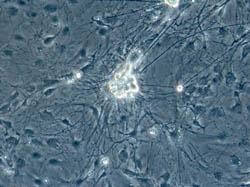
Conventional wisdom tells us that you can’t teach an old cell new tricks. Scientists at Stanford University, however, have been able to change adult mouse skin cells into mouse neurons. Unlike previous work with converting cells from one form to another, this research does not require the skin cells to become induced pluripotent stem cells (iPS) first. The Stanford team was able to directly convert skin to nerve by altering just 3 genes in a method that was both quicker and more efficient than previous iPS experiments. This work was recently published online in Nature, and has important implications in establishing how scientists could convert any cell into any other type of cell. While these researchers are actively trying to translate this work for use in humans, for now it is simply an important leap forward in understanding the ways in which mammal cells can transform.
We’ve seen something of an evolution in the understanding of the importance of stem cells in the past few years. Embryonic stem cells were once the center of research and the focal point for political controversy. ESC research is still likely to yield some amazing science in the next few years. However, scientists also became enamored with iPS cells, which showed much of the same dynamic range as ESC. Now, Stanford researchers have essentially proven that ESC and iPS are probably unnecessary for cell transformation. Undoubtedly ESC and iPS have many more contributions to make to medical and biological research, but direct adult cell conversions (through genetic manipulation) could prove to be an exciting and lucrative path for scientists to follow.
Finding the three key genes to convert mouse skin cells to neurons wasn’t simple. Harvard researchers had shown previously that genetic changes could induce mouse pancreas cells to convert into other types of pancreatic cells to help with tissue repair. Marius Wernig (lead on the Stanford team) decided to take the next step to see if genetics could work with other cell types. The group identified 19 possible genes that were important in neural development. They then infected mouse cells with these genes using a lentivirus, and got skin cells to transition into nerve cells in about 32 days. After trial and error, Wernig’s team was able to winnow down the 19 genes to just 3 (Ascl1, Brn2, Myt1l) which were key to converting mouse skin cells into neurons.

The results were amazing. Using these three genes, the Stanford team could convert mouse skin cells from the tail into nerve cells in about one week with an efficiency up to 20%. Similar transformations using iPS can take multiple weeks and typically only get 1-2% of cells to successfully convert. Newly transformed mouse cells developed synaptic connections with other new neurons and produced neural proteins. They were capable of generating typical electric currents for nerve cells. Not only was Stanford able to produce new nerve cells, those cells were shown to immediately start working and behaving like normal neurons.
There are a few caveats to this work, however. Wernig and his group used fibroblast mouse skin cells. These cells are more transformative in nature than other adult cells. Also, all of the work was performed on cells in vitro, that is, in a lab environment. No work was done with living cells while still on the mouse. And while researchers are looking to duplicate these results with human cells, such work is likely to be years from serious application.
Still, the ability to transform one type of adult cell into a neuron is remarkable. This could allow scientists to create nerve cells for research. One day, doctors could even repair nerve damage by inducing surrounding cells to transform to neurons. Yet the most important implication is simply that you don’t have to go through a stem cell stage to get adult cells to change. That fact alone could reshape the research paths for many scientists in related fields of biology and medicine. It’s exciting to see how genetic manipulation can transform animals at the most basic levels. Which reminds me, I have to go check on my super smart rat. I’m teaching her how to blog.
[image credits: T. Vierbuchen, Stanford University]



